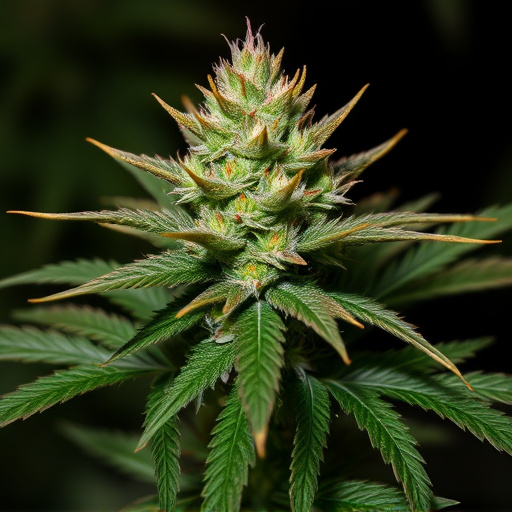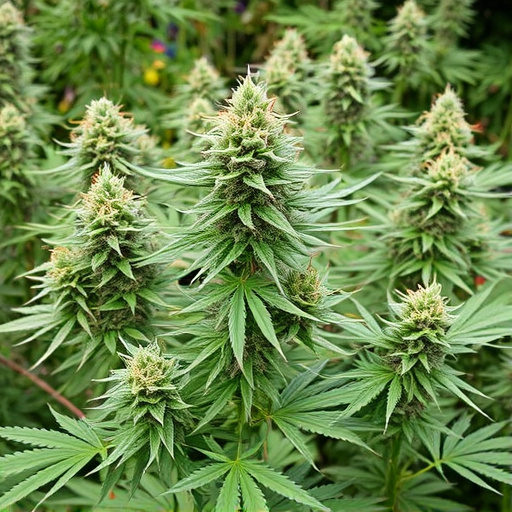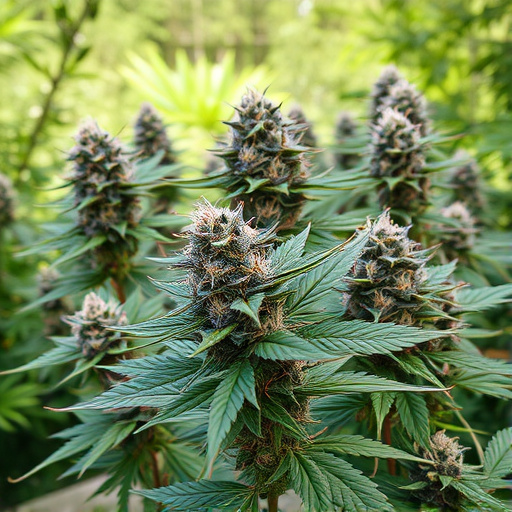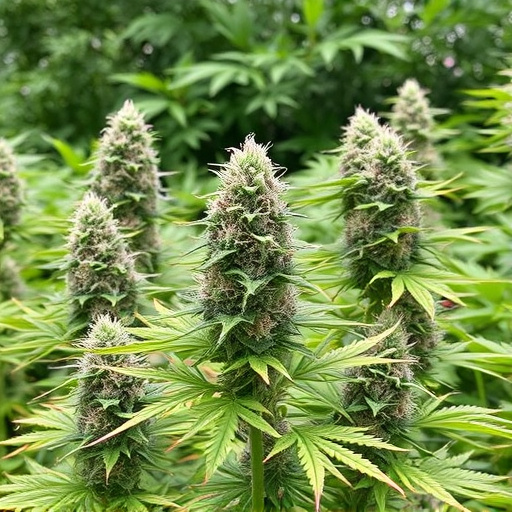Outdoor cannabis strains are a natural solution for pain relief due to their interaction with the body's endocannabinoid system (ECS). Rich in diverse genetic profiles, these strains target neuropathic and inflammatory pain by activating specific ECS receptors. They offer higher CBD levels than THC, making them ideal for pain management without psychoactive effects. Outdoor cannabis boasts anti-inflammatory and analgesic terpenes and flavonoids, providing relief from chronic conditions like muscle soreness, arthritis, and nerve damage. The science behind its pain-relieving properties involves compounds like CBD and THC modulating the ECS and reducing inflammation.
Cannabis flower has gained attention as a natural alternative for pain management, offering a range of potential benefits. This article explores how cannabis interacts with our bodies to provide analgesia, delving into the science behind its effects. We’ll also spotlight outdoor cannabis strains, known for their diverse properties that can target specific types of pain. Understanding these natural remedies is crucial in navigating modern wellness practices, especially as outdoor cannabis strains continue to gain popularity.
- Understanding Cannabis and Its Effect on Pain Relief
- Outdoor Cannabis Strains: A Deep Dive into Their Unique Properties
- Exploring the Science Behind Cannabis' Analgesic Effects
Understanding Cannabis and Its Effect on Pain Relief

Cannabis, especially outdoor cannabis strains, has gained significant attention for its potential in providing pain relief. This natural compound interacts with the body’s endocannabinoid system (ECS), which plays a crucial role in regulating pain perception and inflammation. By activating certain receptors in the ECS, cannabis can block pain signals from reaching the brain, offering a unique and alternative approach to managing chronic pain.
The effects of cannabis on pain relief are multifaceted. Different strains, with varying levels of THC (tetrahydrocannabinol) and CBD (cannabidiol), can target specific types of pain, such as neuropathic or inflammatory conditions. Outdoor cannabis strains, often known for their diverse genetic backgrounds, may offer a range of medicinal benefits, including analgesic properties. Moreover, the plant’s aromatic compounds contribute to its therapeutic effects, making it a potential game-changer in alternative medicine for pain management.
Outdoor Cannabis Strains: A Deep Dive into Their Unique Properties

Outdoor cannabis strains, grown in natural sunlight and fresh air, offer unique properties that differ from their indoor counterparts. These strains often boast higher levels of CBD (cannabidiol) compared to THC (tetrahydrocannabinol), making them particularly effective for managing pain without inducing psychoactive effects. The sun-kissed flowers of outdoor strains contain a diverse range of terpenes and flavonoids, which are natural compounds known for their therapeutic benefits. These include anti-inflammatory properties that can help reduce chronic pain, as well as analgesic effects that provide relief from acute injuries.
Moreover, outdoor cannabis strains often exhibit more complex flavor profiles and aromas due to the varying environmental conditions they experience during growth. This diversity means there’s an outdoor strain suitable for different types of pain management regimens. Whether it’s muscle soreness, arthritis, or nerve damage, each strain offers a unique combination of cannabinoids and terpenes that can target specific pain points, making them valuable resources in natural pain relief strategies.
Exploring the Science Behind Cannabis' Analgesic Effects
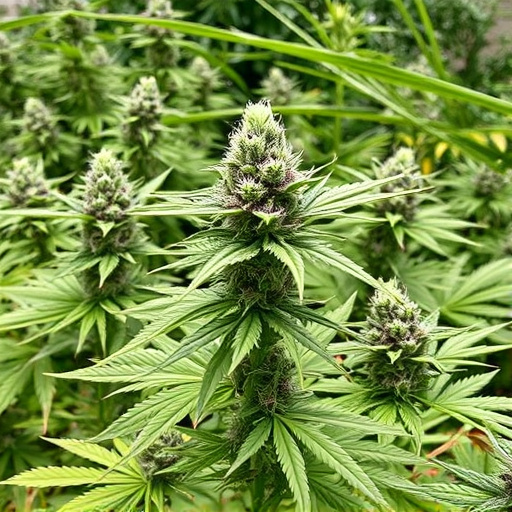
The science behind cannabis’ analgesic, or pain-relieving, effects is a fascinating realm of study. Research suggests that certain compounds found in outdoor cannabis strains, primarily cannabidiol (CBD) and tetrahydrocannabinol (THC), play a significant role in mitigating pain. These compounds interact with the body’s endocannabinoid system (ECS), which acts as a sophisticated regulatory network, influencing various physiological processes, including pain perception.
THC, known for its psychoactive properties, binds to specific receptors in the ECS, blocking pain signals from reaching the brain. On the other hand, CBD doesn’t bind directly but instead modulates the activity of these receptors and other neurotransmitters, potentially reducing inflammation and inhibiting nerve impulses associated with chronic pain conditions. The diverse range of outdoor cannabis strains offers different ratios of CBD to THC, allowing for tailored treatments based on individual needs and preferences.
Cannabis flower’s effectiveness in managing pain is a fascinating interplay of various compounds, including cannabinoids and terpenes. Outdoor cannabis strains, with their diverse genetic backgrounds and unique chemical profiles, offer distinct analgesic properties. Scientific research continuously uncovers the mechanisms behind cannabis’ natural pain-relieving abilities, providing hope for those seeking alternative treatments. Understanding these components and exploring outdoor cannabis strains can empower individuals to make informed choices in managing chronic pain naturally.




